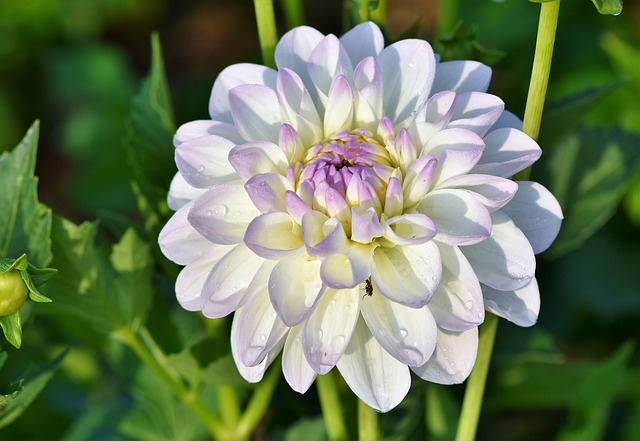Vertical gardens, or urban gardening walls, are transforming small urban spaces into vibrant oases by efficiently utilizing limited real estate. They enhance landscapes, improve environmental sustainability, and offer opportunities for urban agriculture. When designing these walls, consider sunlight exposure, structural integrity, and accessibility for maintenance. Plants like succulents and herbs thrive in minimal care and indirect light, while materials like wooden pallets or recycled metal sheets ensure durability and customizable designs. Regular cleaning, watering, fertilization, pest management, and pruning maintain their health and beauty. Urban gardening walls beautifully blend nature with urban living.
Transform your small spaces into vibrant oases with vertical gardens, the ultimate game changer for urban living. In this comprehensive guide, we explore how these lush, climbing plants can enhance your home’s aesthetics and improve air quality. From choosing the perfect location to maintain a thriving garden, we’ll navigate you through every step. Discover the benefits of urban gardening walls and unlock the potential of even the tiniest terraces.
- Understanding Vertical Gardens and Their Benefits for Urban Spaces
- Choosing the Right Location for Your Urban Gardening Walls
- Designing and Planning Your Vertical Garden
- Getting Started: Plants and Materials for Small-Scale Vertical Gardening
- Maintenance Tips to Keep Your Urban Green Walls Thriving
Understanding Vertical Gardens and Their Benefits for Urban Spaces

Vertical gardens, also known as urban gardening walls, are a revolutionary concept transforming small urban spaces into vibrant oases. This innovative approach involves growing plants and flowers vertically on structured panels or frameworks, allowing for an efficient use of limited real estate. By installing these gardens on walls, fences, or even as free-standing structures, cities can bring nature indoors and create aesthetically pleasing environments that enhance the overall quality of life for urban dwellers.
The benefits of vertical gardens are numerous. They not only beautify urban landscapes but also contribute to environmental sustainability by improving air quality, reducing noise pollution, and providing habitats for local wildlife. Additionally, these gardens offer a unique opportunity for urban agriculture, allowing residents to grow their own fresh produce in compact spaces. In terms of design, vertical gardens can be customized to suit various architectural styles, making them a versatile solution for both residential and commercial settings.
Choosing the Right Location for Your Urban Gardening Walls

When considering vertical gardens, selecting the perfect location is a crucial step in your urban gardening journey. These lush walls can transform any compact space into an oasis, but the key lies in choosing the right spot. Look for areas that receive ample sunlight; most plants thrive under direct or indirect sunlight, so positioning your garden near windows, balconies, or even outdoor lighting will ensure they get the light they need to flourish.
Consider the structural integrity of the surface as well. Vertical gardens often attach to walls, fences, or existing structures, so evaluate the strength and stability of these elements. Additionally, think about accessibility; you should be able to easily maintain your garden by reaching all areas for planting, watering, and general care. With these factors in mind, you’ll be well on your way to creating a vibrant urban gardening wall.
Designing and Planning Your Vertical Garden

Transforming small spaces into vibrant oases is now easier than ever with vertical gardens. When designing your urban gardening walls, start by assessing your available space and sunlight exposure. Choose a location that receives at least 6 hours of direct sunlight daily for optimal plant growth. Decide on the type of vertical garden that best suits your needs; options include free-standing structures, hanging baskets, or even transforming existing walls into living art.
Plan out the layout of your garden by considering plant height, spreading habits, and desired visual appeal. Incorporate a mix of annuals, perennials, herbs, and even edible plants to create a functional and beautiful space. Remember to account for watering needs; some plants may require additional irrigation, especially in drier climates. With careful planning, your vertical garden will not only enhance your small space but also bring nature closer to urban living.
Getting Started: Plants and Materials for Small-Scale Vertical Gardening

Getting Started with Small-Scale Vertical Gardening involves selecting the right plants and materials tailored for urban gardening walls. For spaces with limited horizontal area, consider fast-growing, compact, or trailing plants that can thrive in vertical structures. Succulents and certain varieties of herbs, such as basil, mint, and rosemary, are excellent choices due to their adaptability and low maintenance requirements. These plants not only add aesthetic appeal but also require minimal sunlight and water, making them perfect for urban environments.
When it comes to materials, the key is to choose lightweight, durable options that can support the weight of the growing medium and plants. Wooden pallets, recycled metal sheets, or specially designed vertical garden systems are popular choices. These materials offer a range of styles and price points, catering to different preferences and budgets. Additionally, ensure you have access to proper lighting, either natural or artificial, as adequate light is crucial for plant growth, especially in smaller spaces where direct sunlight might be limited.
Maintenance Tips to Keep Your Urban Green Walls Thriving

Keeping your urban gardening walls thriving requires a bit of care and attention, but the results are well worth the effort. Regular cleaning is essential to remove any dust or debris that may accumulate on the wall’s surface. Use a soft brush or cloth to gently scrub away dirt, especially in hard-to-reach areas. Ensure you water your vertical garden consistently, as under-watering can cause the plants to wilt, while over-watering might lead to root rot. A balanced fertilizer every few months will provide essential nutrients for optimal growth.
Monitor pest and disease activity, treating any issues promptly with organic or safe chemical solutions. Prune your plants regularly to maintain their shape and encourage new growth. The key is to find a maintenance routine that works for you, allowing you to enjoy the beauty of your urban gardening walls without overwhelming effort.
Transforming small spaces into vibrant oases is now easier with vertical gardens, also known as urban gardening walls. By strategically placing these green features in urban areas, we can enhance aesthetics, improve air quality, and create peaceful retreats amidst the hustle and bustle of city life. With careful planning, choosing the right plants, and consistent maintenance, anyone can harness the power of vertical gardening to bring nature closer to urban settings. Embrace the trend and start cultivating your own urban oasis today!
